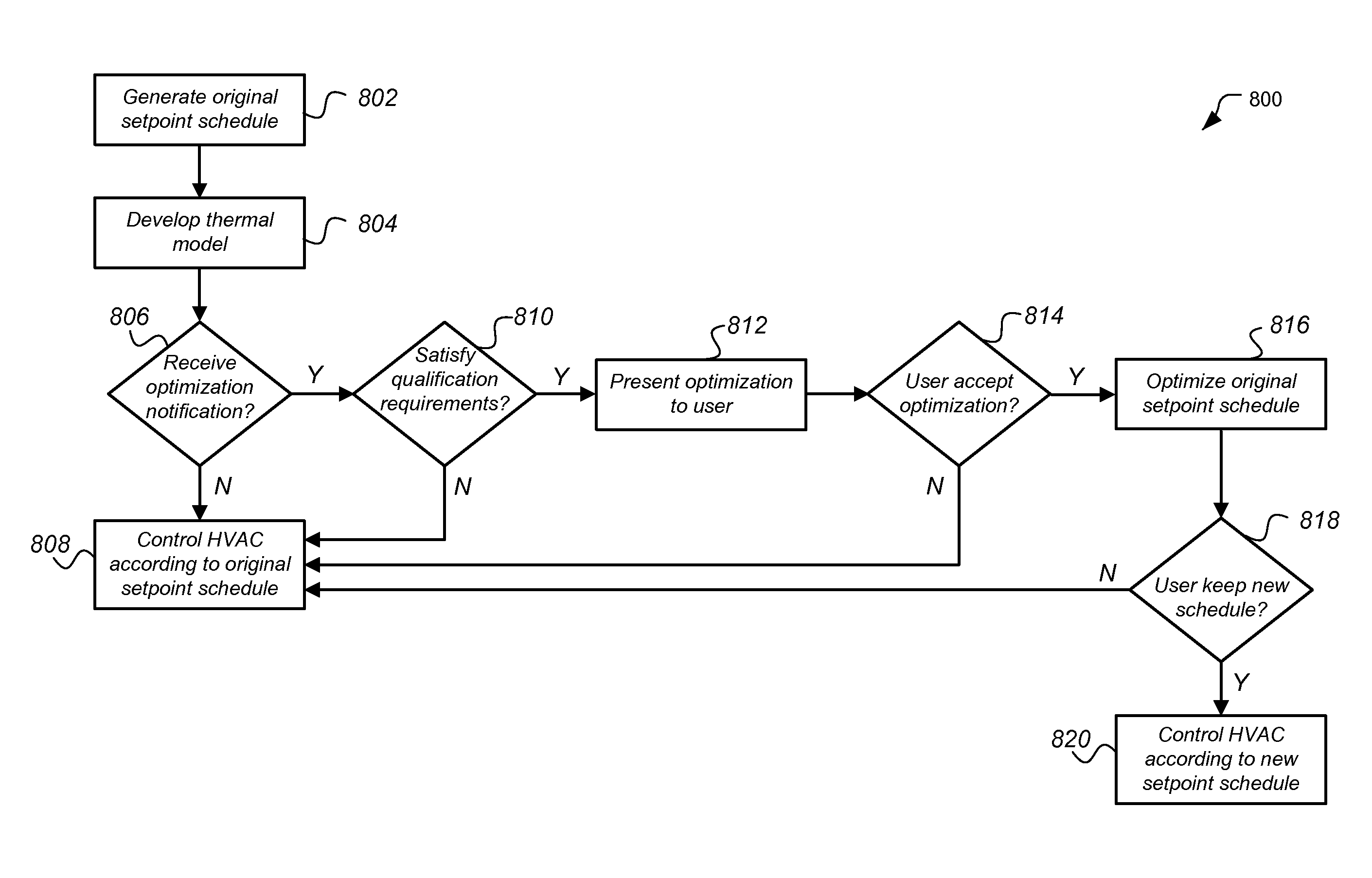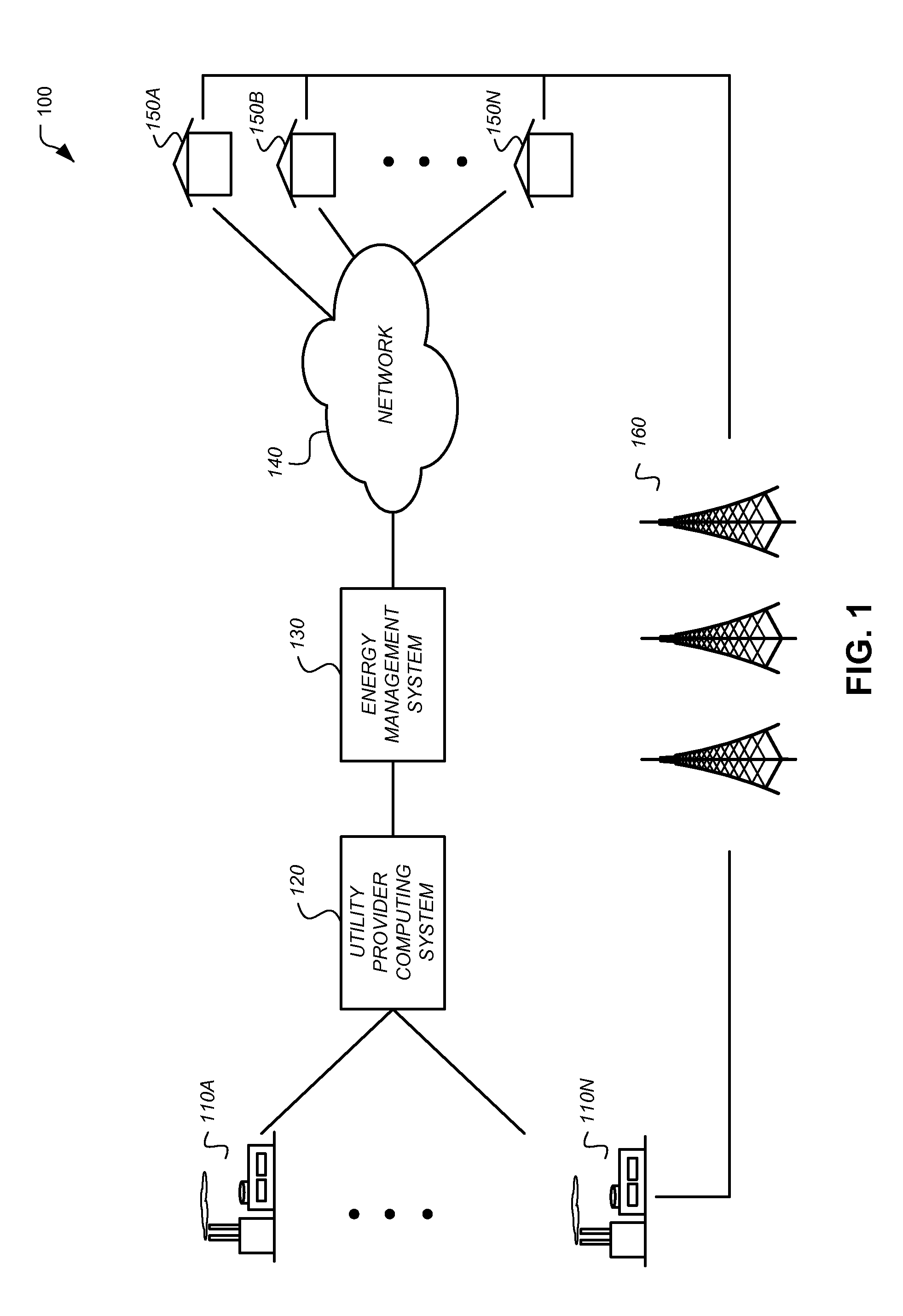Automated adjustment of an HVAC schedule for resource conservation
a technology of automatic adjustment and resource conservation, applied in the direction of lighting and heating apparatus, heating types, instruments, etc., can solve the problems of unsatisfactory hvac schedule, unsatisfactory hvac schedule, and inability to reach the nexus between user comfort and user, so as to reduce the energy consumption of the hvac system
- Summary
- Abstract
- Description
- Claims
- Application Information
AI Technical Summary
Benefits of technology
Problems solved by technology
Method used
Image
Examples
first embodiment
[0132]Turning now to FIG. 10, FIG. 10 illustrates a process for optimizing an original schedule of setpoint temperatures (e.g., as described with reference to operation 816) according to a To facilitate understanding, the process 816 is described with reference to FIGS. 1, 2, and 9, although it should be understood that embodiments of the process 800 are not limited to the exemplary systems and apparatus described with reference to FIGS. 1, 2, and 9.
[0133]In operation 816A the original schedule of setpoint temperatures is identified. For example, a processor of thermostat 202 may read a schedule of setpoint temperatures stored in a storage element of thermostat 202. In operation 816B, the original schedule of setpoint temperatures is incrementally adjusted. The temperature control trajectory defined by the original schedule of setpoint temperatures may be incrementally modified to reach some new, optimal schedule of setpoint temperatures, where the new schedule may be optimal in te...
second embodiment
[0140]Turning now to FIGS. 11A and 11B, FIGS. 11A and 11B illustrate a process for optimizing an original schedule of setpoint temperatures (e.g., as described with reference to operation 816) according to a To facilitate understanding, the process 816 is described with reference to FIGS. 1, 2, 9, 12A to 12H, 13A, and 13B, although it should be understood that embodiments of the process 816 are not limited to the exemplary embodiments described with reference to FIGS. 1, 2, 9, 12A to 12H, 13A, and 13B. Further, it should be understood that similar operations described with reference to FIG. 10 may similarly be applied to the operations described with reference to FIGS. 11A and 11B, where duplicate description is omitted to reduce reader burden.
[0141]In operation 816AA, an original schedule of setpoint temperatures is identified. This operation is similar to operation 816A. Such an original schedule may be, for example, similar to that described with reference to FIG. 12A. As mentio...
PUM
 Login to View More
Login to View More Abstract
Description
Claims
Application Information
 Login to View More
Login to View More - R&D
- Intellectual Property
- Life Sciences
- Materials
- Tech Scout
- Unparalleled Data Quality
- Higher Quality Content
- 60% Fewer Hallucinations
Browse by: Latest US Patents, China's latest patents, Technical Efficacy Thesaurus, Application Domain, Technology Topic, Popular Technical Reports.
© 2025 PatSnap. All rights reserved.Legal|Privacy policy|Modern Slavery Act Transparency Statement|Sitemap|About US| Contact US: help@patsnap.com



